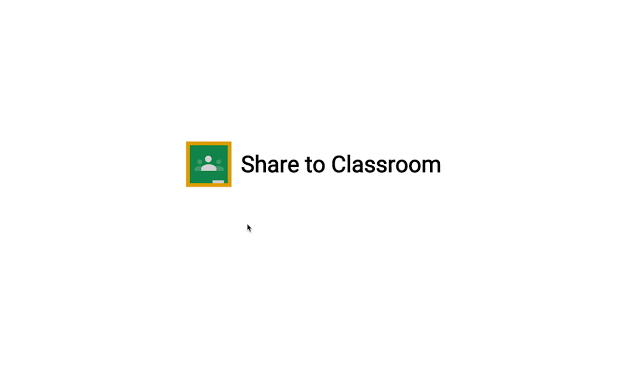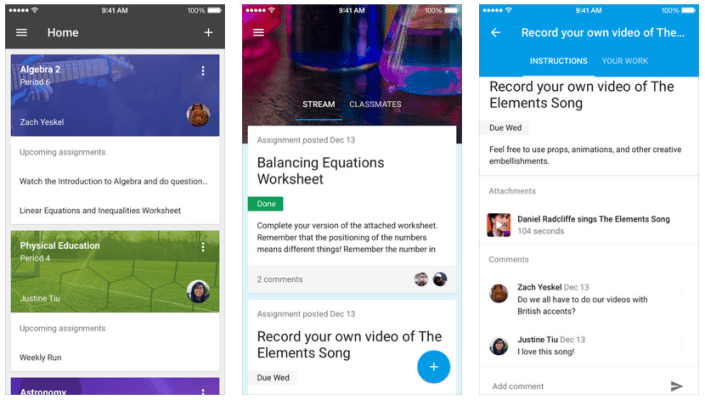Google Classroom, the company’s educational initiative that launched last year to allow teachers and students to communicate and collaborate with each other using Google tools and services, has today received a number of new features, the most notable being a new Classroom API for admins, and a Classroom share button. The latter lets developers or schools simplify sharing content – including links, videos and images from around the web – with the Classroom platform. It’s being launched alongside 20 educational content and tool providers such as PBS, Quizlet, the American Museum of Natural History, Discovery Education, Duolingo, and TIME for Kids, among others.
Classroom, a part of Google’s Apps for Education product lineup, first debuted in 2014 just ahead of the start of the school year. It uses Google’s Docs, Drive and Gmail to make assignment creation and tracking easier for teachers, while also allowing them to make announcements, ask questions and respond to student questions in real-time. The platform was later expanded to mobile in the beginning of this year. The program is aimed at expanding the use of Google Apps in school systems, and ties into Google’s other efforts in this space, like getting its Chromebooks adopted by educational institutions.
Today’s news is about making it easier for admins, developers and schools to integrate and extend the use of Classroom. With the Classroom API, now in developer preview, admins will be able to more easily set up, provision and populate Classroom on behalf of teachers, as well as sync content from their Student Information Systems with Classroom and gain insight into which classes are being taught in their domain.
Google noted a few developers have already been testing the new API ahead of this announcement. Two of these, rosterSync for Sheets, from The New Visions CloudLab (makers of Doctopus) and Alma, are focused on syncing data like class rosters into Classroom. A third developer, Pear Deck, is using the API to automatically invite a class’s current roster of students to their interactive presentation service called Pear Deck.
Additionally, admins will be able to control whether teachers and students in the domain can authorize apps to access Classroom data. And, Google reminds us, it won’t permit apps using the Classroom data by way of the API to engage in advertising. This follows on the policy changes Google introduced last spring, where the company said it would stop mining education Gmail and Google Apps accounts for ad targeting purposes, after a court case said that doing so violated user privacy.

For developers, Google is also introducing a Classroom share button, which is about making it easier for teachers and students to either assign or turn in content from external sites and services into Classroom. For example, a teacher could point students to links, images or videos on the web directly from the Classroom interface. Meanwhile, students could click the button on supported third-party sites to share content back to Classroom.
The Classroom platform as a whole also received a number of other upgrades which, in some cases, will arrive over the next few weeks, including the ability to whitelist domains across other Google Apps for Education domains, effectively allowing students, teachers and staff to work together in Drive and Classroom from different schools. Other additions include support for push notifications on the Classroom mobile apps; the ability to re-use previous posts (e.g. past assignments and materials can be used in future classes); and the ability to more easily provision Google Apps accounts by automating username creation.
